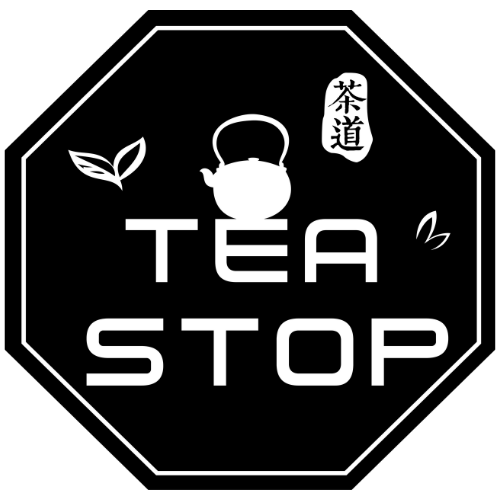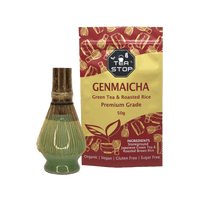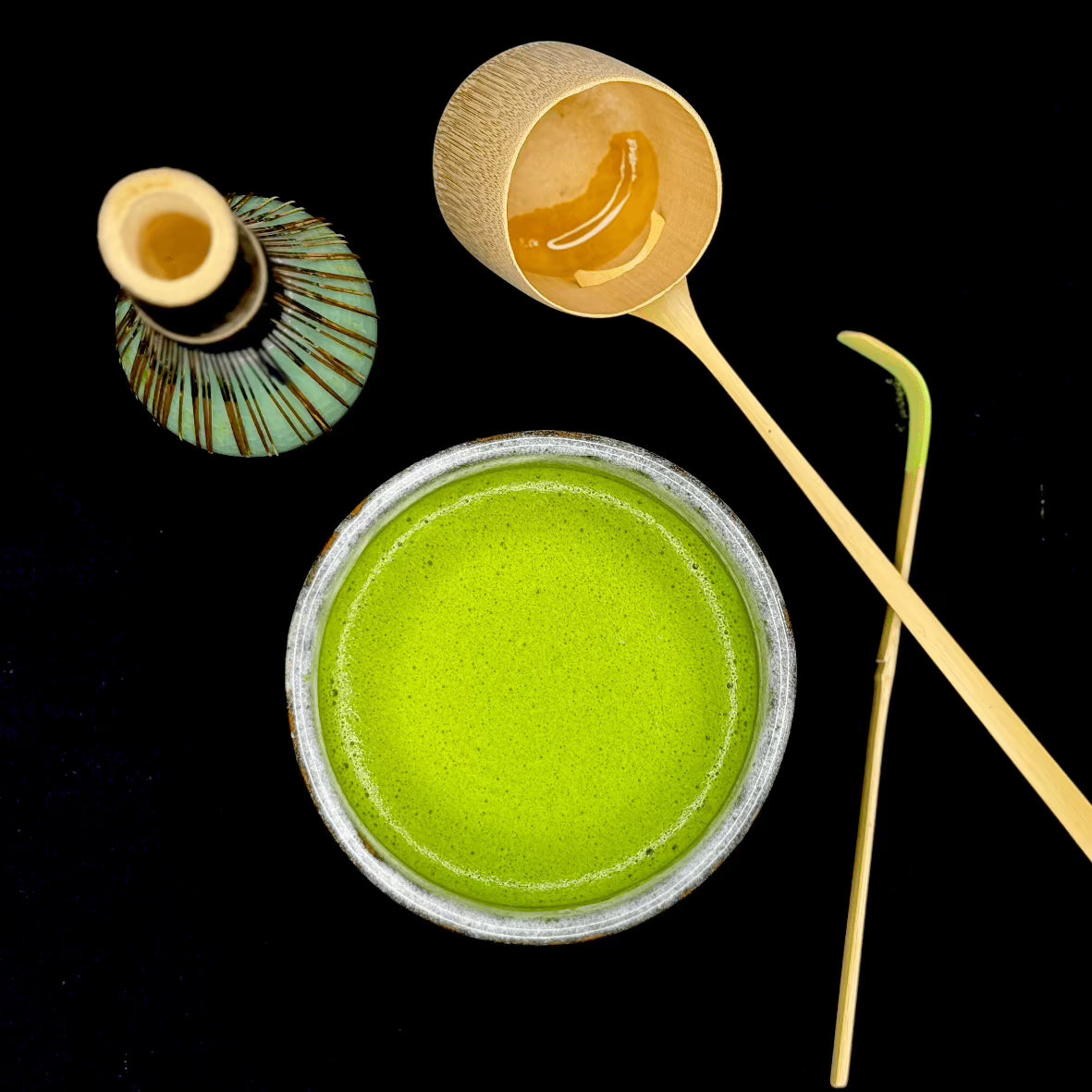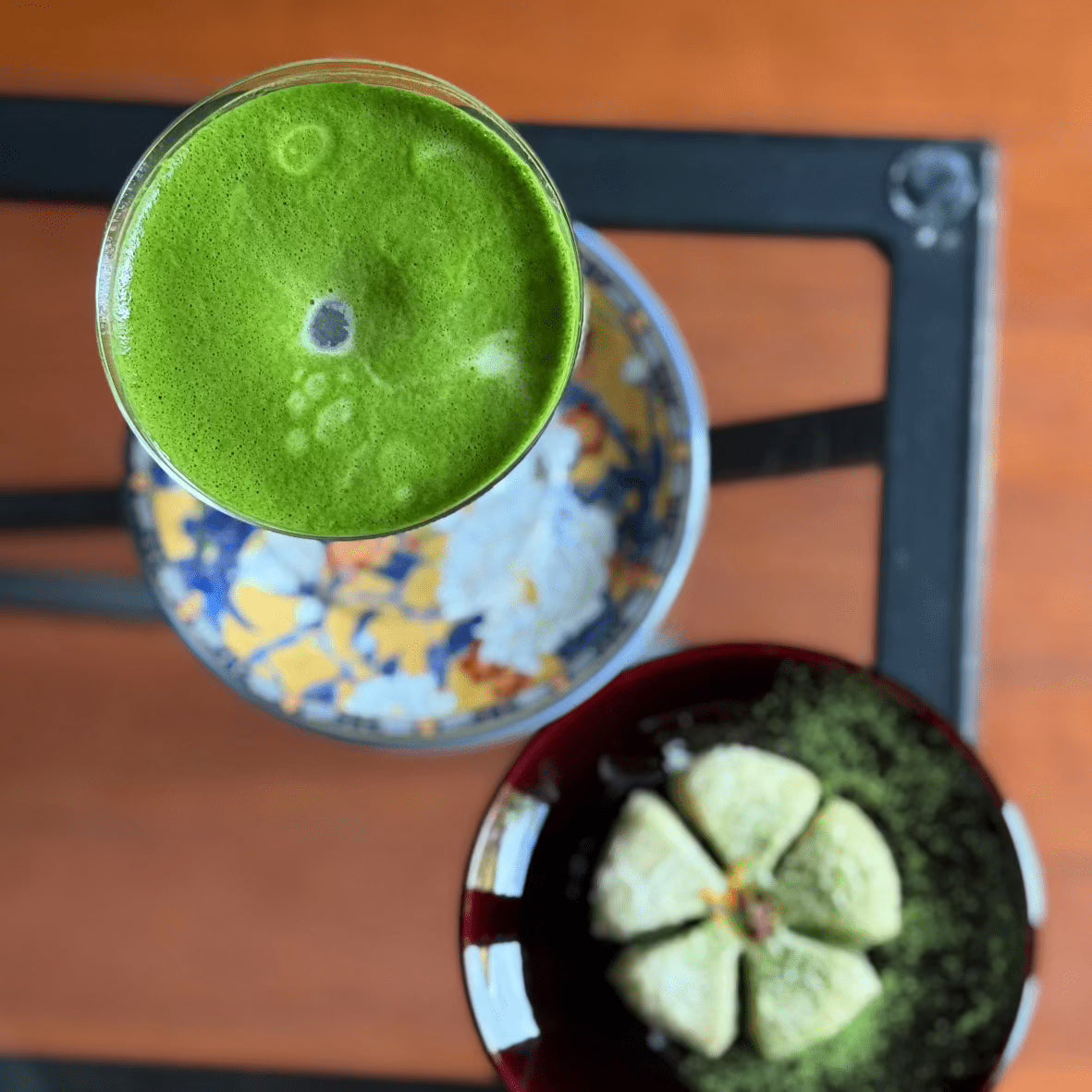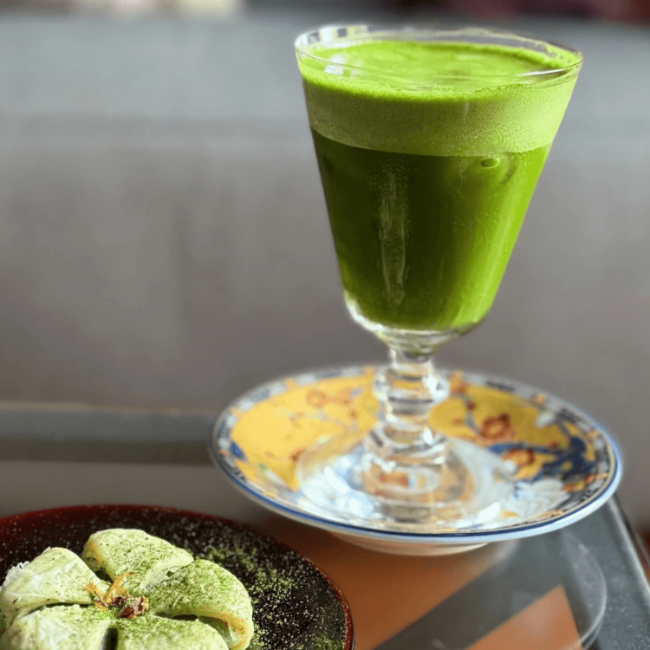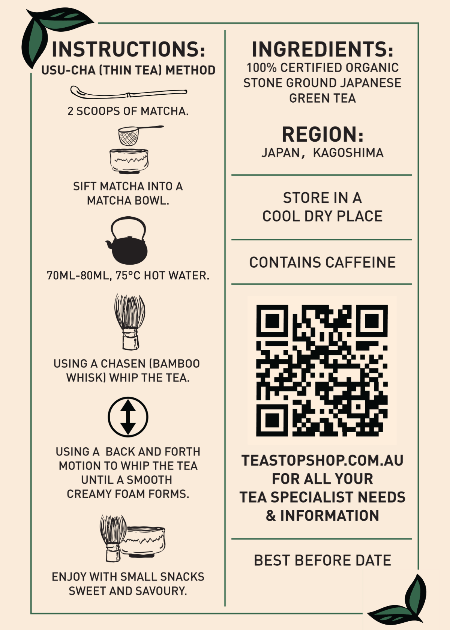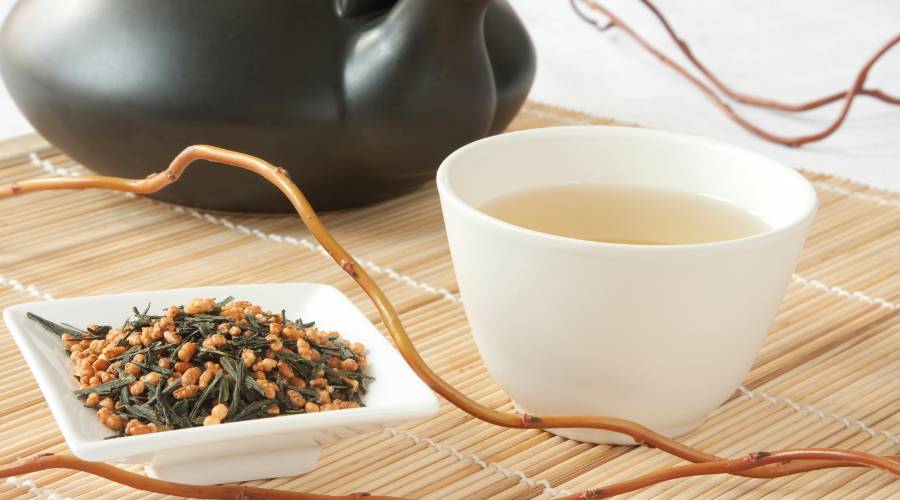
A Guide to Genmaicha: Unique Flavor Profile and Cultural Significance of Japanese Roasted Rice Tea
Share
Genmaicha, also known as Japanese roasted rice tea, is a delightful blend of green tea and roasted rice. It originated in Japan as a way to stretch limited tea supplies by adding rice but has since become a beloved part of Japanese tea culture.
By understanding Genmaicha's unique flavor profile and cultural significance, we can better appreciate this comforting beverage. The combination of fresh green tea and warm, toasted rice creates an experience that is both calming and energizing. This balance reflects Japanese hospitality and simplicity, making Genmaicha more than just a drink—it's a cultural tradition.
Exploring the flavors and history behind Genmaicha deepens our connection to this cherished tea, inviting everyone to enjoy its distinct character.

The Origins of Genmaicha
Genmaicha has a rich history that reflects Japanese culture, showcasing its simplicity and resourcefulness. This traditional Japanese tea came about during a time when it was important to make the most out of limited resources. By combining green tea with roasted rice, people found a way to stretch their precious tea supplies, creating an affordable option that still had the refreshing qualities of regular teas.
1. Historical Background in Japan
Genmaicha's origins can be traced back several centuries. As a staple in Japanese households, it became particularly popular among the lower classes who sought ways to extend their tea reserves without sacrificing flavor or enjoyment.
2. Stretching Limited Tea Supplies
The ingenious addition of roasted rice served not just to economize but also introduced a unique taste profile. This blend delivered a satisfying nutty aroma and flavor, enhancing the drinking experience while conserving more expensive green tea leaves.
3. Evolution into Popularity
Over time, Genmaicha transcended its humble beginnings. Its distinctive taste and health benefits elevated it beyond an economical choice into a beloved beverage enjoyed across all social strata. Today, Genmaicha's appeal continues to grow globally as tea enthusiasts discover its delightful balance and cultural richness.
This blend's journey from necessity to indulgence highlights its enduring charm within the world of teas.
Understanding the Flavor Profile of Genmaicha
Genmaicha, often known as "roasted rice tea," offers a unique flavor profile that captivates both tea enthusiasts and casual drinkers alike. Its distinct taste comes from the combination of fresh green tea leaves and roasted brown rice, creating a complex taste experience that is deeply rooted in Japanese tea culture.
Flavor Notes and Aroma
1. Fresh Green Tea Notes
The base of Genmaicha is typically a variety of green tea such as Bancha or Sencha. This provides a fresh, vegetal flavor that is characteristic of Japanese green teas. These notes are crisp and vibrant, delivering a refreshing quality to each sip.
2. Nutty and Roasted Undertones
The addition of roasted brown rice gives Genmaicha its trademark nutty undertones. This roasting process also infuses the tea with a comforting warmth and depth, reminiscent of toasted grains.
3. Aroma Comparison to Freshly Popped Corn
When brewed, Genmaicha releases an enticing aroma similar to freshly popped corn. The scent adds an inviting complexity, enhancing the overall sensory experience.
4. Overall Taste Experience
The combination of these elements results in a smooth taste with a slight sweetness that balances the natural bitterness of green tea. This makes Genmaicha exceptionally approachable for those new to the world of green tea.
Brewing Techniques for Optimal Flavor
Achieving the perfect cup of Genmaicha involves careful attention to brewing techniques:
- Recommended Water Temperature: For optimal flavor extraction, it's ideal to use water heated to 176°F (80°C). This temperature helps preserve the delicate flavors without causing bitterness.
- Ideal Steeping Time: A steeping time of 2-3 minutes is recommended. However, adjustments can be made based on personal preference—shorter times yield lighter flavors while longer steeps intensify the roasted notes.
By understanding these key elements in Genmaicha's flavor profile and brewing methods, one can savor this beloved tea's true essence, experiencing firsthand its rich cultural heritage and distinctive taste journey.
Cultural Significance of Genmaicha in Japan
Genmaicha is an important part of Japanese tea culture. It has its special qualities and history that make it stand out. This tea is often associated with simplicity and hospitality, representing traditional values and customs that have been passed down through generations.
Role of Genmaicha in Traditional Japanese Customs
Genmaicha is commonly served during various traditional occasions, showing its strong connection to Japanese customs. It is often offered to guests as a sign of goodwill, symbolizing warmth and a welcoming spirit. The tea's unpretentious nature perfectly aligns with the Japanese principle of wabi-sabi, which appreciates beauty in simplicity and imperfection. This makes Genmaicha an ideal choice for everyday gatherings, where it promotes a sense of togetherness and harmony.
Association with Simplicity and Welcoming Hospitality
The association of Genmaicha with simplicity can be traced back to its origins as an accessible alternative to more expensive teas. Its straightforward yet flavorful profile makes it a favorite in households across Japan, emphasizing hospitality without the need for elaborate preparation. Serving Genmaicha conveys a message of humility and sincerity, traits revered in Japanese society.
Occasions Where Genmaicha is Typically Served
Genmaicha is typically served on various occasions, including:
- Casual Gatherings: Ideal for informal meetings or family get-togethers.
- Traditional Ceremonies: Occasionally featured alongside other teas.
- Everyday Enjoyment: Commonly consumed as part of daily routines.
The "Popcorn Tea" Nickname
The delightful nickname "popcorn tea" comes from the visual appeal and taste imparted by the popped rice grains present in Genmaicha. These grains not only create an inviting aroma reminiscent of freshly popped corn but also add texture to the tea, enhancing its overall sensory experience.
"The popped rice grains give Genmaicha its distinctive look and playful nickname—'popcorn tea'."
The name captures both the whimsical aspect of its appearance and its comforting qualities, making it memorable among tea enthusiasts worldwide. This charming characteristic contributes significantly to the popularity and cultural identity of Genmaicha within Japan and beyond.
Understanding these aspects deepens our appreciation for this humble yet profound beverage. To fully enjoy the health benefits it offers, having the right teaware or accessories can enhance your experience. Additionally, consider exploring different sets of Genmaicha available online to further immerse yourself in this unique aspect of Japanese culture.

Health Benefits of Genmaicha
The health benefits of Genmaicha are as delightful as its flavor. Central to its beneficial properties is the presence of catechins found in green tea. These antioxidants play a crucial role in combating oxidative stress, potentially reducing the risk of chronic diseases by protecting cells from damage.
Nutritional Boost from Roasted Rice
Roasted rice contributes additional nutritional value to Genmaicha. It adds dietary fiber, which aids digestion and supports a healthy gut. The rice also provides essential nutrients like magnesium, phosphorus, and vitamins that can complement a balanced diet.
Synergistic Effects for Cellular Protection
Research suggests that the combination of green tea and roasted rice may offer protective effects against cellular damage. This synergy enhances the tea's overall health-promoting properties, making it a soothing choice for those seeking wellness through their beverage choices.
Simple Wellness Ritual
Incorporating Genmaicha into your daily routine can be a simple yet effective way to enjoy these health benefits while savoring its unique taste. Whether enjoyed alone or paired with meals, it offers both comfort and nourishment, embodying a harmonious blend of traditional Japanese wisdom and modern-day wellness practices.
Enjoying Genmaicha Today: Serving Suggestions and Pairings with Meals, Everyday Consumption Versus Special Occasions
Genmaicha, with its unique blend of roasted rice and green tea, offers a delightful versatility in its consumption. Whether you prefer to enjoy it alone or paired with meals, this tea consistently delivers a comforting experience.
Versatility in Consumption
- Alone: The soothing aroma and nutty flavor make Genmaicha an excellent choice for a quiet afternoon break or a moment of reflection. Its mild taste appeals to both seasoned tea drinkers and newcomers alike.
- With Meals: Its earthy undertones complement various dishes, making it an adaptable companion during meal times.
Suggestions for Food Pairings
Genmaicha's subtle flavors can enhance the dining experience when paired thoughtfully:
- Japanese Cuisine: Traditional dishes such as sushi or sashimi harmonize beautifully with Genmaicha, allowing the tea's roasted notes to balance the freshness of the fish.
- Light Snacks: Pair with rice crackers or lightly salted nuts to accentuate the tea’s nutty undertones.
- Western Dishes: Consider serving Genmaicha alongside grilled chicken or vegetable stir-fry for a fusion touch that complements its earthy profile.
Popularity During Special Occasions vs. Everyday Enjoyment
While Genmaicha holds a place in everyday Japanese life due to its affordability and ease of preparation, its sophisticated flavor profile also makes it suitable for special occasions. It is often served to guests as a gesture of hospitality, reflecting the tea’s role in cultural practices. Whether enjoyed daily or reserved for gatherings, Genmaicha remains a beloved staple in Japanese tea culture.
Understanding these serving suggestions and potential pairings can enrich your appreciation of Genmaicha, offering new ways to integrate this distinctive tea into your culinary experiences.
Conclusion
Exploring the world of Genmaicha not only allows us to enjoy its unique taste but also gives us a chance to appreciate Japanese tea traditions on a deeper level. The story of Genmaicha, with its history and evolving significance today, is truly fascinating.
- A Comforting Beverage: The combination of fresh green tea and nutty roasted rice in Genmaicha naturally encourages us to explore this soothing drink. With each sip, we can find moments of peace that reflect the simplicity and hospitality values deeply rooted in Japanese culture.
- An Experience Steeped in Heritage: By understanding where Genmaicha comes from, we can develop a greater appreciation for it. This transforms it from just another drink into an experience filled with cultural significance. When we engage with its story, we create a connection that goes beyond flavor and opens up new possibilities for discovering other types of Japanese teas.
The journey through the rich flavors of Genmaicha is only one aspect of fully embracing all that this tea has to offer.
FAQs (Frequently Asked Questions)
What is Genmaicha and what are its main components?
Genmaicha is a traditional Japanese tea that combines green tea with roasted rice. The unique flavor profile features fresh green tea notes complemented by nutty and roasted undertones from the rice, creating a smooth and slightly sweet taste experience.
What is the historical significance of Genmaicha in Japan?
Genmaicha has a rich history in Japan, originally developed as a way to stretch limited tea supplies. Over time, it evolved into a popular beverage, reflecting the cultural importance of simplicity and hospitality in Japanese tea culture.
How should Genmaicha be brewed for optimal flavor?
To brew Genmaicha effectively, it is recommended to use water at a temperature of 176°F (80°C) and steep the tea for 2-3 minutes. Adjustments can be made based on personal preferences to enhance the flavor experience.
Why is Genmaicha sometimes referred to as 'popcorn tea'?
The nickname 'popcorn tea' arises from the visual appeal and texture added by the popped rice grains in Genmaicha. This unique characteristic contributes to its charm and makes it distinct within Japanese tea culture.
What are some health benefits associated with drinking Genmaicha?
Genmaicha contains catechins from green tea, which are known for their antioxidant properties. Additionally, roasted rice contributes dietary fiber and essential nutrients, potentially offering protective effects against cell damage.
How can I enjoy Genmaicha in my daily life?
Genmaicha is versatile for consumption, whether enjoyed alone or paired with meals. It is popular during special occasions but can also be appreciated in everyday settings. Consider pairing it with light dishes to enhance your tasting experience.
